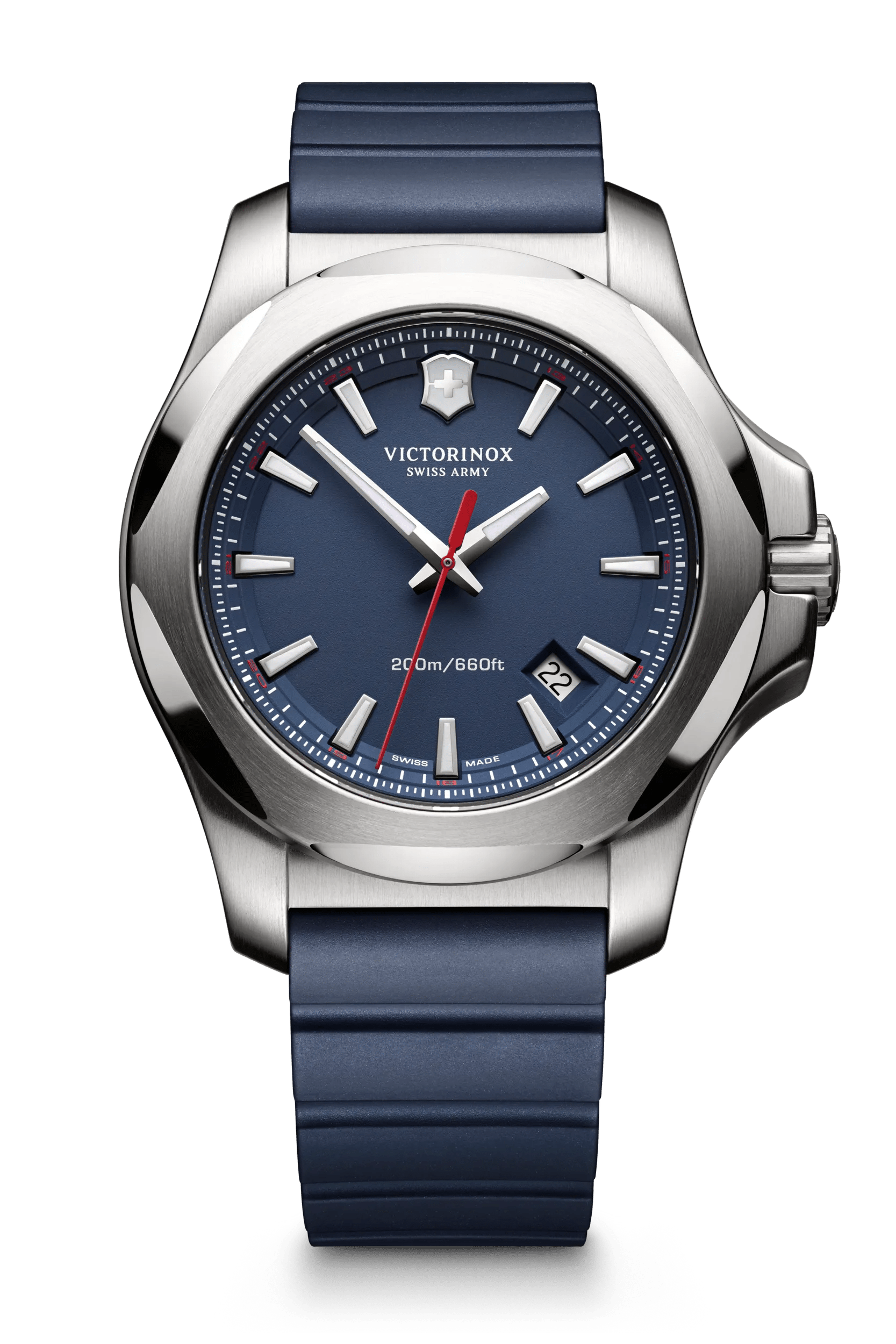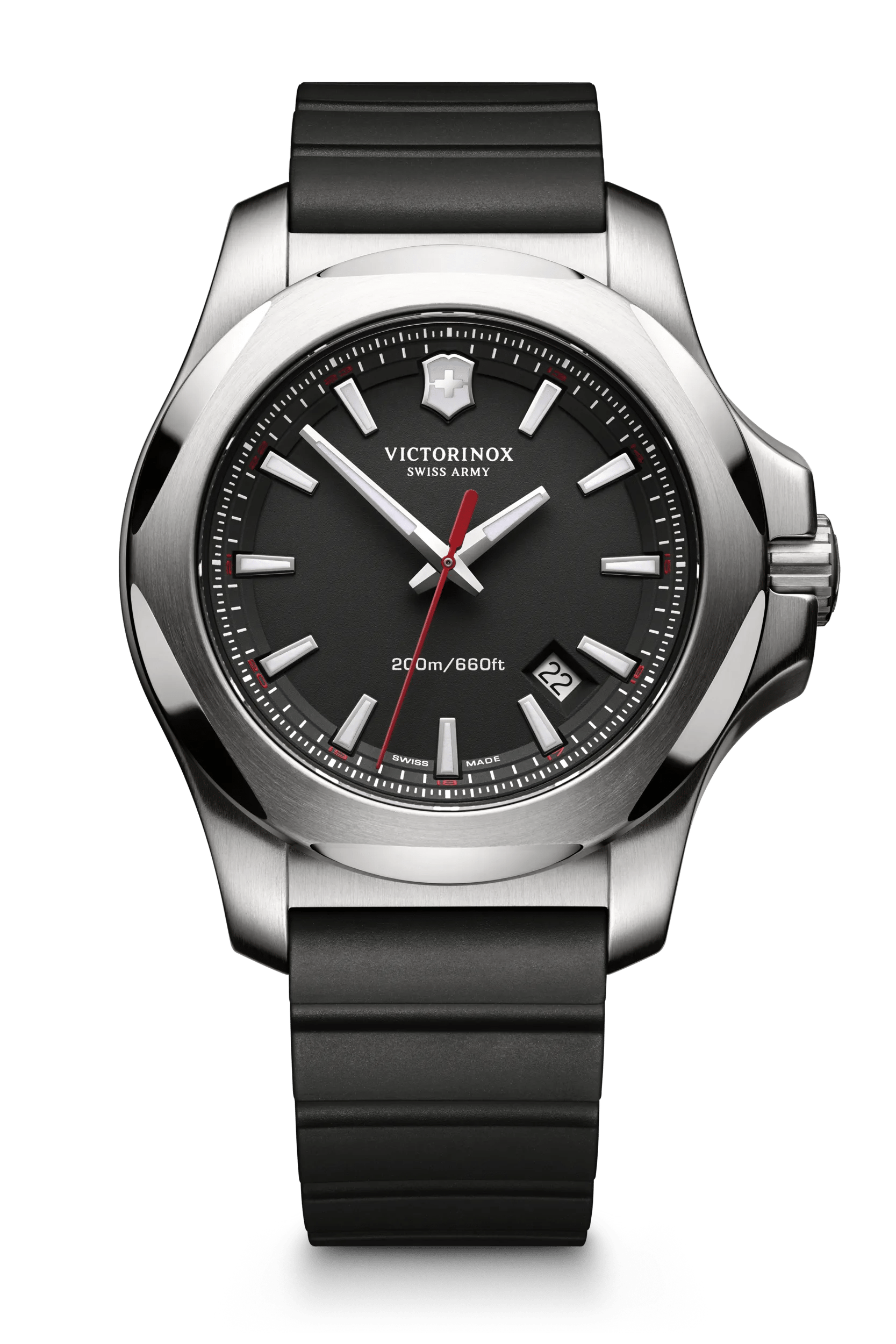El futuro del acero inoxidable
Victorinox y ECAL innovan en el material del reloj I.N.O.X.
Para explorar las posibilidades del acero inoxidable en la industria del reloj, queríamos preguntarle a la nueva generación de diseñadores su opinión sobre este material tradicional. Entonces nos encantó la idea de colaborar con una de las escuelas de diseño más famosas e innovadores del mundo: la reconocida Escuela Cantonal de Arte de Lausana, en una palabra: ECAL. Se tomaron estudiantes de todo el mundo de áreas como la cirugía médica, la nanotecnología o la biomímesis, y aplicaron este conocimiento al mundo de los relojes.
Una historia de tradición e innovación
Con el pasar de los años, hemos acumulado bastante experiencia en el trabajo con acero inoxidable. Hace aproximadamente 100 años éramos la primera empresa de cuchillos en el mundo en trabajar con este material. Esta innovación marcó un punto de inflexión tan importante en la calidad de nuestros productos que en 1921 integramos el nombre en inglés del acero no oxidable “inox” a nuestra marca.
Desde entonces, el acero inoxidable ha sido parte esencial de nuestro trabajo. Fue la experiencia lo que nos condujo al mundo de los relojes. Con toda nuestra experiencia, nos pareció natural comenzar a fabricar relojes. Y es así como nació el legendario I.N.O.X.: un homenaje a un material que sigue sorprendiéndonos con su ingenuidad.
Únase a nosotros para explorar las fascinantes posibilidades del acero inoxidable.
Stainless steel – 1 material, 11 innovations
When light beams get focused and then diverted by a reflective material, caustics are created. For example the light reflection in a swimming pool. Applying an engraving according to the principles of light caustics on a watch surface, adds an almost “magical property”. Image: picture taken by student, Rayform SA
The project was headed up by Alexis Georgacopoulos, Director of ECAL, and Thilo Alex Brunner, Head of Master in Product Design at ECAL. Under their initiative, designer and ECAL professor Alexander Taylor led students from all over the world through a three month project on discovering new possibilities for the use of stainless steel.
What is the future of stainless steel in the watch industry, Alexander Taylor?
Why didn’t you design watches in this project but focused on material?
I believe the students and designers should learn skills enabling them to be multifaceted in approach and work not only with the finished object, working in a way exploring first the ways in which we can work without the parameters of the object. The character of the object and the opportunity to create something new in both terms of aesthetic and production will come from a collaboration with makers and understanding of the designer to tailor the technologies to a particular need. During this process opportunities will inevitably present themselves beyond the original brief. By not focusing on a particular design of a watch it allowed us to let the process really inform and influence the formal outcome.
What makes stainless steel such an interesting material to work with?
It has such a beautiful and highly functional industrial quality, somehow hi-tech yet so familiar! It is a material with the ability to stimulate the senses and is associated with pioneering product / structures and performance. With this project however we illustrated how you can take a material which is so familiar and still propose absolutely new ways in which it can be fabricated or processed.
About Alex Taylor, Awarded British Designer, Professor at ECAL
Compartir por correo electrónico
Éxito
Su mensaje se envió correctamente.
¡Error!
Se produjo un error al intentar enviar su mensaje. Vuelva a intentarlo.
Se agregó el producto a su carro de compras


